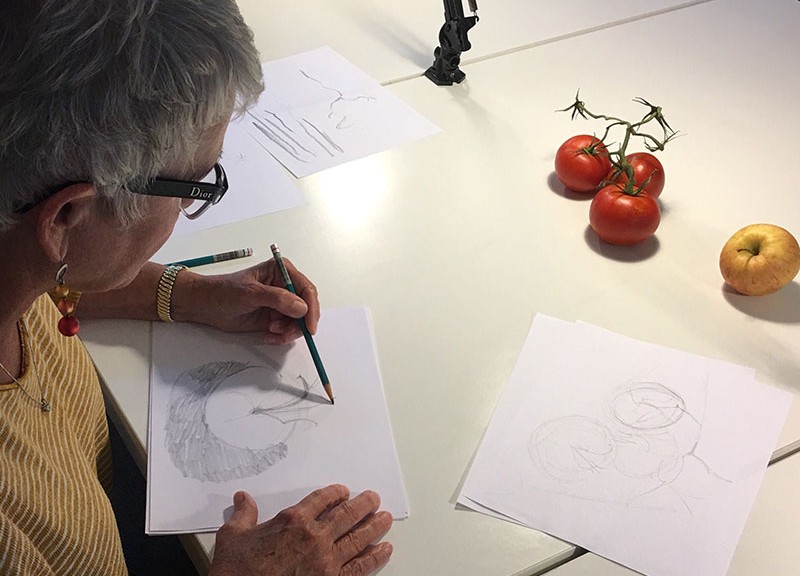“I can’t even draw a straight line!” is a common phrase I hear before beginners start lessons with me. But we soon learn to draw a wide variety of lines, including reasonably straight ones. With practice, even errant and wobbly lines will bend to your command. For students like Dotty, shown above, putting various lines to work is at the heart of learning to draw from observation.

Mapping out the early stages of your drawing should feel a bit like geometry class—an intriguing process of discovering relationships between abstract shapes.
This is where straight lines come into the picture. In her book, Classical Drawing Atelier, Juliette Aristides writes, “Straight lines are used more frequently than curved lines for drawing because they are easier for the mind to comprehend. The curve is very difficult to copy directly, while straight-line relationships can easily be measured.”

This classical method of using straight lines instead of curved lines to measure may seem counter-intuitive at first, but it is essential for building an accurate drawing.
As you progress through corrections and adjustments to your composition, angled lines and abstract shapes gradually give way to sketching curved contour lines and specific details of your subject. Once the final framework is constructed, you can relax into modeling your three-dimensional form with light and dark values.

Adding curved lines is the emotional stage of your drawing—it is what we sketchers live for! Your inner artist lights up as curves bring movement and harmony to the structured framework of angled lines.

“A drawing is simply a line going for a walk.”
—Paul Klee, artist
After spending time studying how to use straight and curved lines in the studio, shifting gears and stepping outside to explore spontaneous, expressive lines is definitely a refreshing change of pace.

During Wednesday’s Drawing Lab, Fiona shared her sketches from a recent school trip to Cuba. Her sketches show how she puts her own style of wonky lines to work.







Rob Court
Latest posts by Rob Court (see all)
- Drawing With Friends - April 11, 2022
- Frozen in Time: Cellphone Users as Models to Draw - April 8, 2022
- Getting Out & Getting Real - June 20, 2021
- Life Lines: Sketching the Unseen World of Movement - June 20, 2021
- The Ups & Downs of Urban Sketching - May 9, 2021
